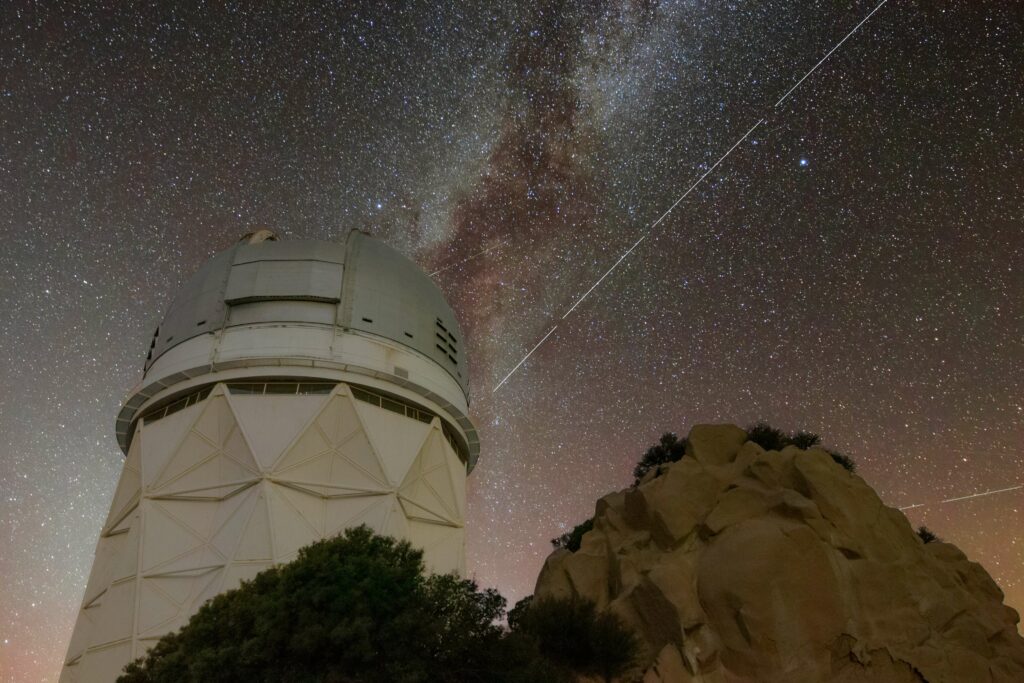Astronomers have called for more protections of our night sky

A recently-launched bright satellite could pose a threat not only to visible astronomy, but also radio observations, causing the International Astronomy Union (IAU) to release a statement expressing concern over the growing number of bright satellites.
BlueWalker 3 (BW3) is a prototype for a new constellation of around 100 telecommunications satellites called BlueBird. However, shortly after it was launched on 10 September 2022, astronomers noted it was extremely bright. The IAU’s Center for the Protection of the Dark and Quiet Sky from Satellite Constellation Interference (CPS) has now collated measurements of the satellite, finding it reaches around magnitude +1.0 at its brightest – similar to Antares, the 15th-brightest star in the sky.
In addition, BW3 uses the same radio frequencies as terrestrial mobile phones, but isn’t bound by requirements to adhere to radio quiet zones around astronomical observatories. “Frequencies allocated to cell phones are already challenging to observe in, even in the radio quiet zones we have created for our facilities,” says Philip Diamond, director general of the Square Kilometre Array Observatory – a huge new radio telescope which began construction on 5 December 2020. “New satellites such as BlueWalker 3 have the potential to worsen this situation and compromise our ability to do science, if not properly mitigated.”
AST SpaceMobile, which operates BW3, has started talks with the IAU, while the Federal Communications Commission (FCC) has created a special office to address satellite constellations, ensuring they perform their important roles in global communications without affecting the scientific and cultural importance of the night sky.
“BlueWalker 3 is a big shift in the constellation satellite issue and should give us all reason to pause,” says Piero Benvenuti, director of the IAU CPS. cps.iau.org
Comment by Chris Lintott

If AST SpaceMobile has its way, there will be 243 satellites as bright as BW3. OneWeb, partly owned by the British government, plans for 648. Amazon’s Project Kuiper anticipates 3,276 in orbit, while SpaceX already has more than 3,000 aloft and plans many more.
These satellites will alter our view of the night sky, interfere with our attempts to spot Earth-threatening asteroids and, according to disturbing new research, may have a significant effect on the upper atmosphere as satellites burn up.
The solution is for governments to stop, now, and work out how we want to use the precious space above our heads. Leaving it to competing companies is not going well.